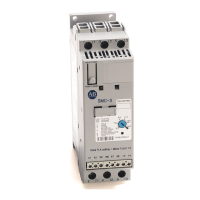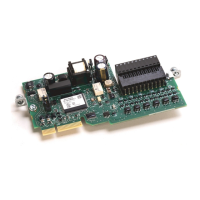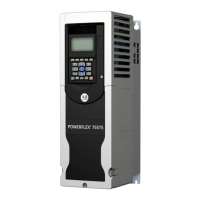184 Rockwell Automation Publication 1560F-UM001A-EN-P - June 2019
Chapter 9 Troubleshooting
Snubber and Resistor
Circuit Testing
If the resistance checks from the thyristor testing section were abnormal and the
thyristors checked out OK, there may be a problem in the snubber or resistor
circuits.
1. Remove all power from the equipment.
2. Check the snubber components and sharing resistors by isolating them and
measuring values as follows (See Figure 69
to Figure 72):
RS 60 Ω (180 A and 360 A)
30 Ω (600 A)
CS 0.5 or 0.68 µF (180 A and 360 A)
1.0 µF (600 A)
RRx 32.5 kΩ total, taps at 2.5 kΩ from each end
(x = 1, 2, or 3)
Replace any out-of-spec components. See Appendix H
.
3. If the snubbers and sharing resistors are within tolerances, check the
resistance of the voltage sensing module (refer to Figure 68
). Remove the
ribbon connector from J1 by pressing down on the locking tabs then gently
pulling the connector out. Take note of which tap the white high voltage
wires are connected to, then remove them (L1, T1, L2, T2, L3, T3).
Measure the resistance between each tap and the ground connection, and
compare to the values in Figure 68
.
SHOCK HAZARD: To avoid shock hazard, ensure main power has been
disconnected before working on the controller, motor or control
devices. Verify that all circuits are voltage free using a hot stick or
appropriate voltage measuring device. Failure to do so may result in
burns, injury or death.

